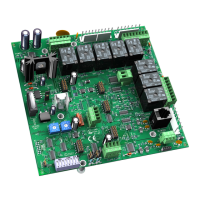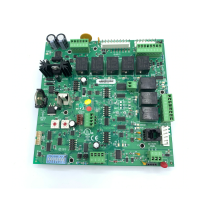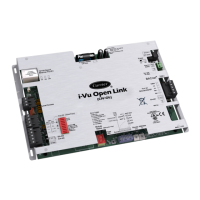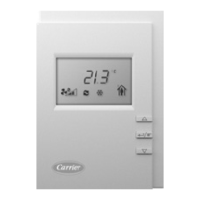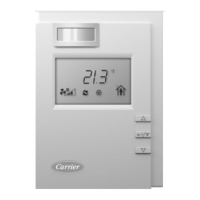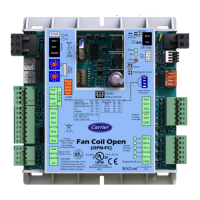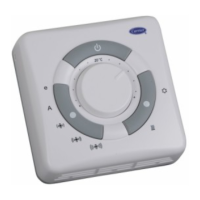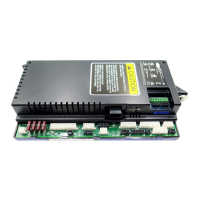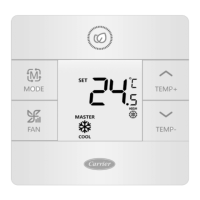Sequence of Operation
RTU Open v3 CARRIER CORPORATION ©2019
Installation and Start-up Guide All rights reserved
51
The specific heating sequence is determined by the controller's application and configuration. The RTU Open
controls up to two stages of gas or electric heating with an additional output for a
(Heat Pump
applications).
The following conditions must be true for the heating algorithm to operate:
• The
is less than the
Heating Lockout Temperature
setpoint
• The indoor fan has been ON for at least 30 seconds
• The unit has a valid
input
• The unit has a valid
input
• Neither Cool mode nor economizer are active and the time guard between modes has expired
The heating relays are controlled by the Heating Control PID Loop and Heating Stages Capacity algorithm, which
calculate the desired number of stages to satisfy the space by comparing the
to the:
•
Effective Occupied Heating Setpoint
when occupied
•
Effective Unoccupied Heating Setpoint
when unoccupied
When the heating algorithm preconditions have been met, the heating is energized in stages. Anti-recycle timers
are employed to protect the equipment from short-cycling. There are fixed one minute minimum on and off times
for each heating output.
During heating operation, the RTU Open may reduce the number of active stages if the rooftop
exceeds the
setpoint. A heat stage turned off in this fashion may be started
again after the normal time-guard period has expired, if the
has decreased below the
setpoint.
The RTU Open can control heat pumps
and
.
provides a separate output (BO-7) to control a reversing valve. The reversing valve control may be
configured to be energized with a call for heating
, or energized with a call for cooling (
).
The sequence of operations are as previously described for heating and cooling except that the
and
outputs
are compressor outputs, energizing mechanical heating or cooling, depending on the state of the reversing valve.
and
are used for auxiliary heat. Up to two stages are available.
Selection
is for heat pumps that do not require a
terminal to energize the reversing valve. The
sequences of operations are as described for Heating (page
51) and Cooling (page 45). The reversing valve output
is not used in this application.
and
are used for auxiliary heat. Up to two stages are available.

